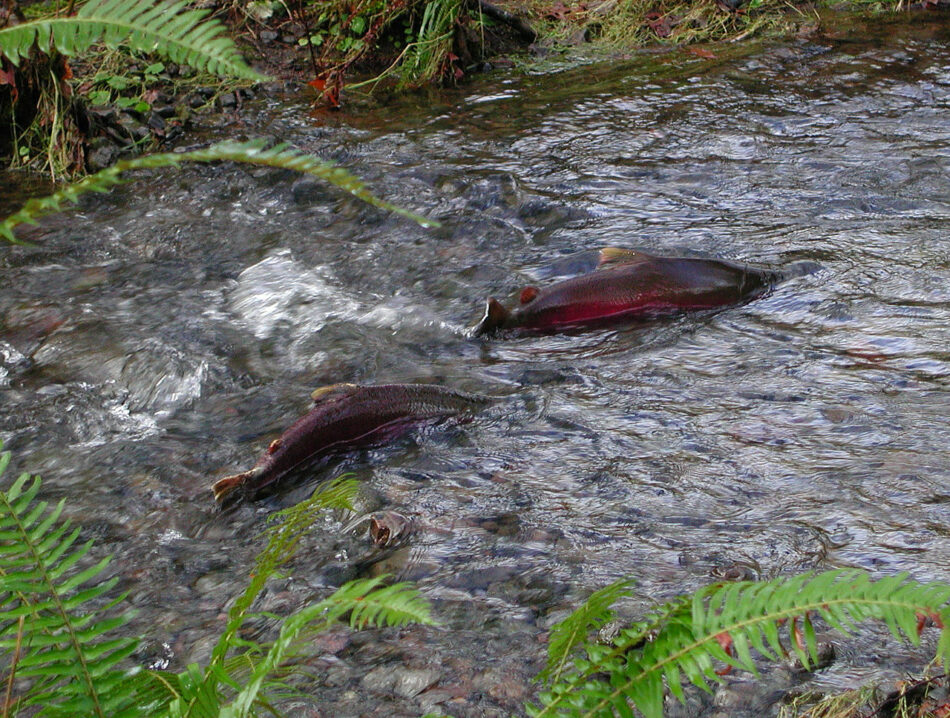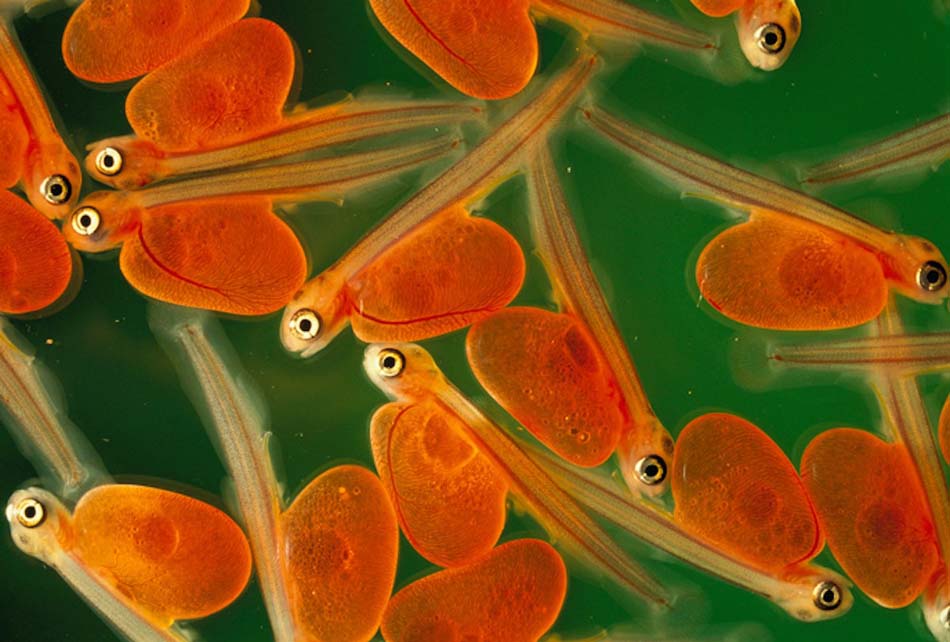
Sockeye salmon alevin during a stage that lasts several weeks. Their journey home is an arduous one, wrought with a gauntlet of threats that stake claim to the lives of millions.
Martin’s alevin, Tube Sac Yolk, fly plays well, no matter the season. It’s easy to tie
By Skip Clement
Salmon, Atlantic and Pacific, and steelhead trout eggs lie in the gravel as the embryos within develop. In time, yolk-sac fry, or alevins, hatch. Alevin and juvenile salmon [fry] grow up in freshwater lakes and streams, and fish, birds, and small land animals feast upon them.
In the Pacific, rainbow trout and Dolly Varden love to eat alevin and fry salmon. Atlantic salmon alevin and fry are gouged on by smallmouth bass, striped bass, Northern pike, sculpin [etc.], birds, and small land animals feast upon them. The striped bass invasion has become a big issue.
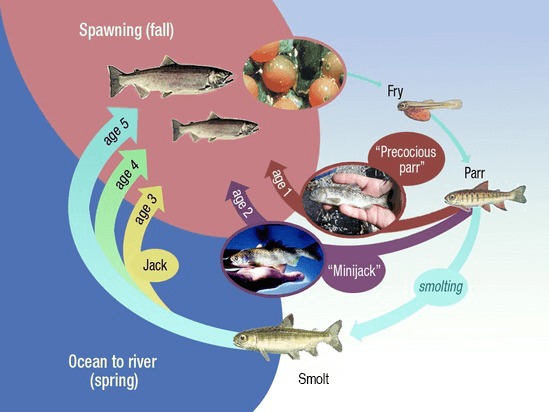
Diagram of general Pacific salmon and steelhead life history phases. Credit NOAA Fisheries.
SIDEBAR: Adult salmon spawn in freshwater, where female salmon lay thousands of eggs that are fertilized by male salmon. Spawning can occur in spring, summer, fall, or winter and depends on the salmon species. After spawning, adult salmon die and their bodies provide nutrients for the freshwater ecosystem. Eggs are buried in gravel nests, called ‘redds,’ and salmon can stay in their eggs for several weeks to months until they hatch. Once eggs hatch, the juvenile fish, are called ‘fry.’ Atlantic salmon can survive spawning.
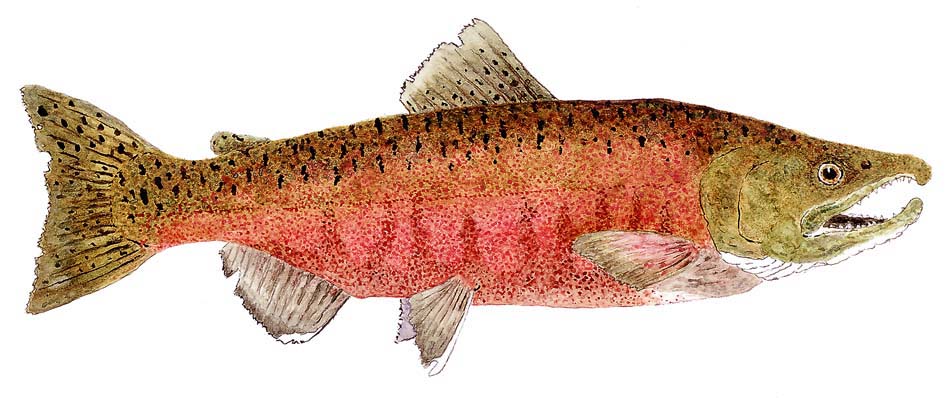
Thom Glace’s Male Chinook salmon in spawning colors. Visit Thom’s site here. . . .
Ruben Martin
Ruben Martin, the world-famous Argentinian fly tier and angler, perceptively recognized that rainbow trout create frenzy-like feeding activity when the yolk-sac alevin becomes exposed. Ruben’s tube-constructed fly hits the subscribe instinct with salmon, but he adds that thinking the fly is a seasonal use or only having a window of use is not the case. The Tube Sac Yolk plays well, no matter the season.
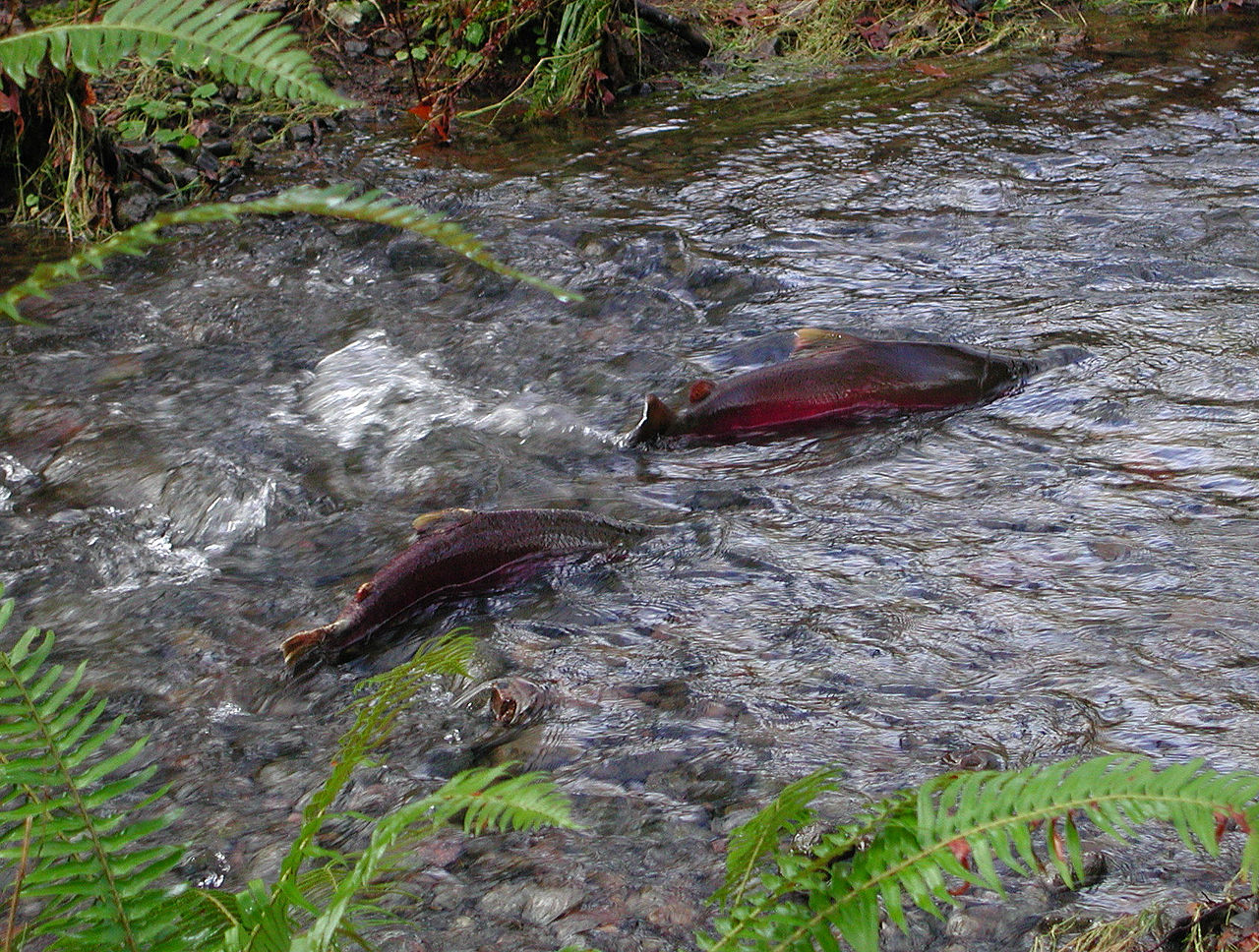
Coho salmon Redd. Oregon Department of Forestry.
Recipe
Hook: Ahrex NS115 DEEP STREAMER #6
Body: Deer Creek mega lazer dub tan
Ribbing: Copper wire
Wing: Whiting american rooster saddles grizzly
Yolk Sac: Deer Creek mega lazer dub
Head: Bead head, poxipol and Deer Creek 3d HD eyes.


